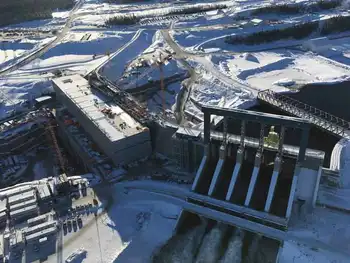Rural broadband – a chicken/egg question
By Globe and Mail
Electrical Testing & Commissioning of Power Systems
Our customized live online or in‑person group training can be delivered to your staff at your location.

- Live Online
- 12 hours Instructor-led
- Group Training Available
"High-speed access, both in terms of speed and overall capacity, are fundamental prerequisites for certain development decisions," said Franklin Holtforster, president and chief executive officer of Ottawa-based MHPM Project Managers Inc. "Anybody who's got land... and is looking at it for industrial or commercial use is keen to drag fibre as close to the site as they can."
But the reality is very different in some smaller centres, where broadband availability is patchy to non-existent or businesses are still struggling with painfully slow dial-up service.
"I've been an Internet service provider for 13 years and it boggles my mind how we have come to expect ubiquitous high-speed access everywhere we go, but it's just not true in the rural areas," said Tom Copeland, chairman of the Canadian Association of Internet Providers and president of Eagle.ca in Cobourg, Ont.
Still, that doesn't stop developers from proceeding with rural projects, apparently with the hope that broadband will magically appear, he said. In his region, eastern Ontario's Northumberland County, for example, the carriers - incumbent cable, telephone and hydro companies - aren't automatically running broadband to new developments.
"They're putting up buildings without ensuring they are on the grid... they just expect the phone company to come along behind them and provide service," Mr. Copeland said.
Phone companies can't always be counted on to offer broadband, even though they may have already wired the buildings for phone service, he said. "The reason we're not seeing the phone companies put a big push on it is simply that [customer base] critical mass isn't yet there."
The cost of running broadband depends on the situation. Running wire to a commercial development could cost about $15,000 a kilometre, Mr. Copeland said. Usually, residential demand drives the rollout of broadband because a subdivision might have scores of new customers. A carrier might not want to invest in servicing a low-density office building or a strip mall with only a handful of tenants, he said.
Whether developers, landlords or tenants are making investment decisions based on broadband availability is a chicken and egg type of question. Commercial land is more appealing if it has access to broadband, but the major carriers are reluctant to wire buildings on spec.
"Having a lot of bandwidth and high-speed broadband connectivity is another piece of infrastructure that you can add to the virtues of undeveloped land, along with a long list of other attributes, like an educated work force, water and power." Mr. Holtforster said. "I wouldn't go so far as to say that if it were only for broadband access, [rural areas] would be doing a lot better, but it makes [Canada] more broadly competitive by making more of the population available to work."
Ottawa is helping local governments improve their public infrastructure, including broadband, through the $33-billion Building Canada plan. The broadband part of the program favours projects that will boost economic development and improve online access to things such as government services, education and health information.
Some provinces already have their own programs, including Ontario, where about 500,000 people in rural southern areas of the province do not have broadband access. Last year, through the Rural Connections Broadband Program, the province distributed $10-million to 18 municipalities so that they could wire households, small and medium-size businesses and local municipal offices. Ontario, which has identified the eastern and southern parts of the province as priorities, is committing another $30-million to the program over four years.
Mr. Copeland said carriers such as Bell Canada, Rogers Communications Inc., Vidéotron Télécom Ltée and Ontario's Hydro One Inc. have already strung main fibre-optic lines on the Windsor, Ont., to Quebec City corridor, primarily along the Canadian Pacific Railway Ltd. and Canadian National Railway Co. lines, as well as highways 401 and 7.
"The problem for some of the rural communities is there is no break-out point in the fibre," Mr. Copeland said. "It's expensive enough that the carriers just aren't putting a splice in their fibre at every little village that the tracks run through."
Still, broadband is just one of a long list of reasons a commercial developer may have for investing in a community, said Mark Kindrachuk, president and chief executive officer of Toronto developer Intermarket Group.
"I don't think it would be the sole driver.... There are a lot of boxes that need to be ticked off before you get to that one," Mr. Kindrachuk said. "For retailers, it's nice to have access, but it's not that huge an issue. Industrial, even less. So the real user is an office user and, frankly, [broadband] wouldn't trigger someone to go into a community."
Unlike about eight years ago, when the major carriers raced to wire office complexes occupied by huge broadband users such as banks and accounting and law firms, there is less incentive now, unless there is a decent return on investment, said Michael Brooks, chief executive officer of the Real Property Association of Canada.
"Now companies have much less capital or are much more risk averse, and they're not going to just go into a building and wire it up on spec," he said. "If broadband is not there, it's because the provider doesn't think there's a market."
Mr. Brooks isn't convinced commercial developers are shunning smaller centres based on broadband access. If a tenant wants it badly enough, getting broadband installed is usually a matter of calling a provider and writing a large cheque, he said.
"I think it's all about the physical real estate for developers because most of them assume they can get the broadband pipe to their building - one way or another."
How broadband service is delivered to businesses in smaller communities depends on terrain and distance from a main line, says Tom Copeland, chairman of the Canadian Association of Internet Providers.
Phone, cable and, in some cases, local hydro companies will run broadband cable wherever there are enough users to achieve an acceptable return on investment, Mr. Copeland said. From there, communities usually partner with local businesses and Internet service providers to build the network out and hook up customers.
Most of the networks being deployed in rural areas are a combination of fibre and wireless, Mr. Copeland said. "They may pull fibre to a central hub and from there [fibre or wireless signals would go] out to remote hubs or to the end customer."
However, in hilly terrain, towers are erected to relay signals to one another, which can be expensive.
When communities are able to offset infrastructure costs with government funding programs, return on investment is less of an impediment, Mr. Copeland said.
"Municipalities, hopefully, are going to make the investment in broadband infrastructure similar to the way they historically have in things like water, sewers, electricity, roads and railway."











